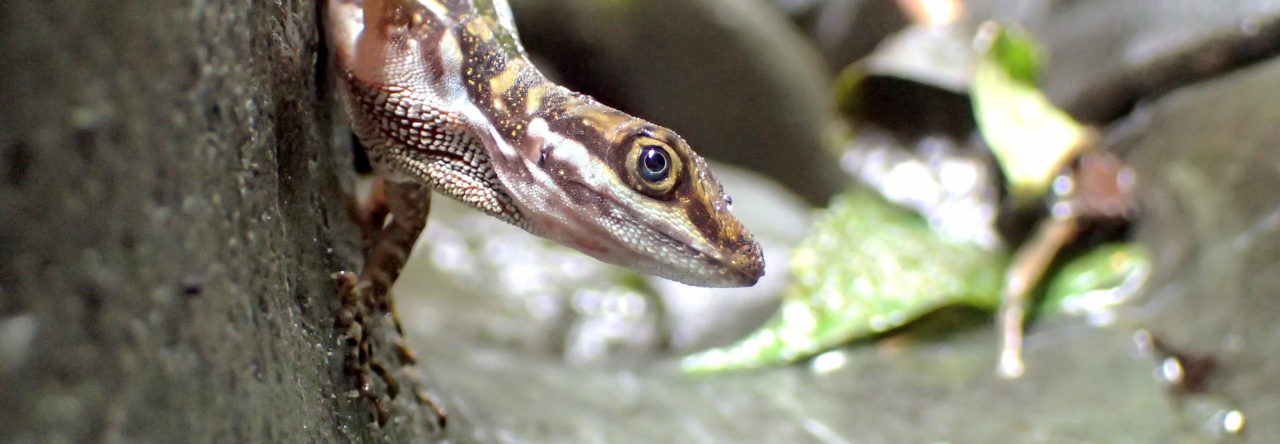My recently published paper in Herpetological Conservation and Biology about the effects of human land use on Anolis carolinensis (abstract below) came from an exciting season of field research. The summer of 2010 in Palmetto State Park in Gonzales, Texas was my first field research experience, where I took my first steps of many (little did I know) into the world of Anole biology. I worked under the supervision of Michele Johnson with an awesome lab group: Tara Whittle (our lab technician), Alisa Dill, Michelle Sparks, and Chelsea Stehle. Yes, I was the only male, and yes, that means I did get a tent all to myself. I took so many things from this experience, both scientific and not, that started my future as a field biologist.

We spent our days out in the hot Texas summer heat, catching, measuring, and observing our new friends, the green anoles. Each of us had our own research to work on that focused on various aspects of green anoles, and so we divided up our field time amongst our projects, helping each other collect data. We designated plots throughout the state park so we could compare the anoles in those plots. I studied the ways that human land use, such as clearing land for buildings, or constructing trails through natural habitat, impacts the lizards’ prey and the lizards themselves. While we did not find any clear trends showing that human disturbance impacts insects, which in turn affects the anoles, we were able to show that human-disturbed plots had higher insect biomass. This would seem beneficial to the anoles, who would theoretically have higher body condition (BMIs: SVL divided by mass) because of the greater amount of available food. However, we found that lizards (females in this case) in plots with greater levels of disturbance had lower BMIs.
The non-straightforward results from my study reflect the complexity of the relationship between humans and the environment; our impacts on the world do not always easily appear. I am taking what I have learned from this experience and am continuing to use anoles as a system to study human impacts on the environment at a local scale. This fall, I will attend the University of Rhode Island and study anoles with Jason Kolbe.
Abstract:
ANDREW C. BATTLES, TARA K.WHITTLE, CHELSEA M. STEHLE, AND MICHELE A. JOHNSON
Abstract.—Lizards frequently occur in disturbed habitats, yet the impacts of human activity on lizard biology remain understudied. Here, we examined the effects of land use on the body condition of Green Anole lizards (Anolisvcarolinensis) and the availability of their arthropod prey. Because human activity generally alters abiotic and biotic habitat features, we predicted that areas modified by humans would differ from areas with natural, intact vegetation in arthropod abundance and biomass. In addition, because biological communities in high use areas are often relatively homogenized, we predicted that higher human land use would result in lower prey diversity. Regardless of land use, we also predicted that areas with greater prey availability and diversity would support lizards with higher body condition. We studied anoles in six plots with varying levels of human modification in Palmetto State Park in Gonzales County, Texas. We quantified arthropod abundance, biomass, and diversity in each plot via transects and insect traps. We also determined lizard body condition using mass:length ratios and residuals, fat pad mass, and liver lipid content. We found that, although arthropod abundance did not differ across plots, arthropod biomass was higher in natural than in disturbed plots. Diversity indices showed that the plots varied in their arthropod community diversity, but not in relation to disturbance. Female (but not male) lizard body condition differed across plots, with body condition higher in natural plots than disturbed plots. Together, these results suggest that land use is associated with lizard body condition, but not through a direct relationship with prey availability.





 Janson Jones
Janson Jones 







